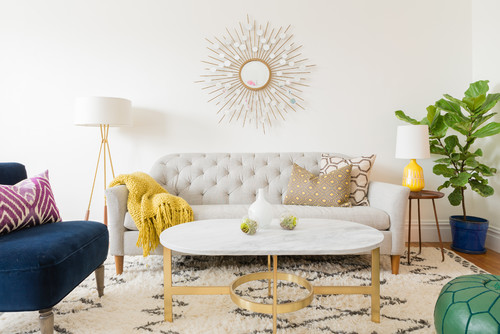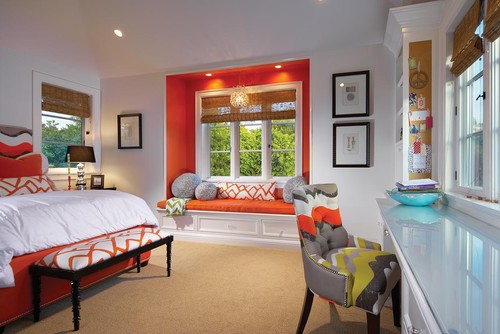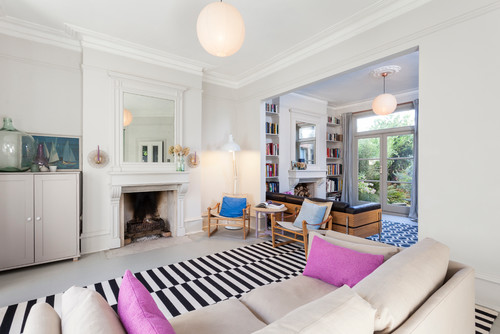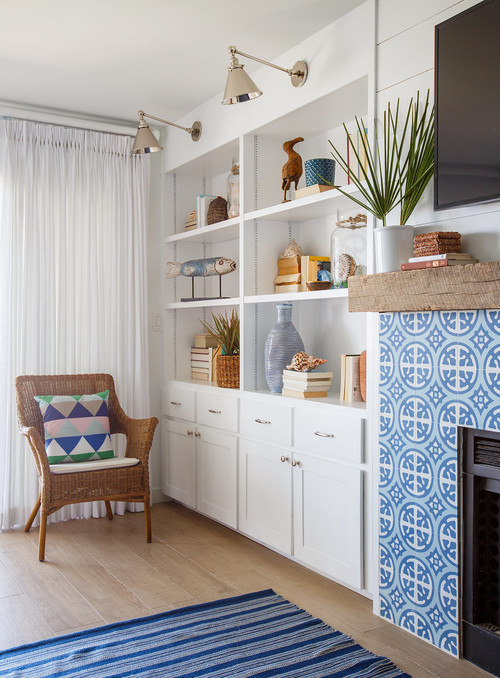
CreativaStudio/iStock
Think minimalism is too stark, and maximalism too much? Then you’re in luck, since the home decor pendulum seems to have swung to the middle.
So what is it? Fittingly, it’s called happy-medium design. In a recent feature, the Wall Street Journal described the trend this way: “Pattern appears in measured amounts, colors tend toward palatable pastels, traditionalism shows up in gracefully curved antiques covered with updated textiles or contemporary shapes clad in classic upholstery. Designers welcome idiosyncrasy but not to a chaotic degree.”
If you’re curious about updating your home to get on board with this new balancing act, start with these simple steps.
What is happy-medium design?
Happy-medium design came about as a reaction to two design styles on opposite ends of the trend spectrum.
“Minimalism is the art of stripping down to the bare essentials of furniture and decor with a clean and neutral palette,” says Courtney Turk, owner of Courtney Turk Interiors. Think straight lines and hard edges, white and light wood with no signs of plushness.
Maximalism is the exact opposite. Every square inch of a home is used to show off bold colors, textures, and patterns. Think of an Oriental rug atop a modern rug, or several types of bright patterns on several throw pillows on a colorful velvet sofa.
Naturally, happy medium is somewhere in between.
“It’s finding the balance between clean lines and indulging in a little extra-saturated color and rich fabric choices,” says Turk.
How to achieve happy-medium design
 Photo by Bart Reines Construction
Photo by Bart Reines Construction
Maximalism goes all out with color; but with happy-medium design, you don’t want to overwhelm the eye with too many hues. Start by minimizing the overall color in your home by painting most walls white.
“Think of white walls as the canvas of your home’s artwork,” says Turk. From there, you can start to build your happy medium.
Next, find a common thread between maximalism and minimalism, then use your design eye to bring them together, says Colin Haentjens, a New York–licensed architect and interior designer at The Knobs Company.
For instance, let’s say you love several types of patterns next to one another (maximalism) but a coherent color palette (minimalism). To achieve a happy medium, find unique patterns that share a neutral shade (happy medium).
Your happy medium could be ornate pieces against a sedate background. Or an incredible arrangement of various artwork on a single wall, next to less distracting furniture and flooring.
“The fun part of happy-medium design is that there are so many ways to achieve the look, no matter where you like to place your focus,” says Haentjens.
What does happy-medium furniture look like?
Whereas minimalism is cold and maximalism is an overabundance, happy-medium design combines the two in a comfortable way, says Leigh Spicher, national director of design studios for home builder Ashton Woods.
“Choose furniture that combines clean lines with soft, ornate touches,” says Spicher, “such as a modern couch in velvety texture with tufted details—this combines the usual cleanness of minimalism with the soft, beautiful textures of a more over-the-top style.”
The happy-medium color palette
Photo by Patterson Custom Homes
Select a rich color palette for your accents. This includes anything from a single painted wall feature down to your throw pillows.
“It’s important to keep the color choice cohesive throughout the room so it doesn’t start to feel maximalist,” says Turk. Instead, you want the color to be an interesting focal point without overwhelming the space.
And don’t be afraid to go big, sometimes.
“A bold area rug is where you can max out textures and saturated colors,” explains Turk. Because a rug is on the floor, it won’t overpower a room on immediate entry and will maintain a home’s happy-medium vibe.
You can also mix patterns and textures together in areas you wouldn’t usually see to add an element of flair and originality, like a fireplace tile or cabinet color. (After all, happy medium doesn’t mean boring!) Just be sure to balance bold areas with adjoining neutral decor.
Photo by Lauren Leonard Interiors
Maximalism demands you place all of your objects out on every surface, and minimalism would have you hide every last collection in a closet. But if you have organized shelving and places for your belongings, you’ll reach that sweet spot in the middle where certain objects will become part of the overall decor rather than clutter.
Photo by Shanade McAllister-Fisher Interior Design
“Just remember, not every wall needs framed art, and not every table needs candles and decor items,” says Spicher. The philosophy of happy-medium design all comes down to balance.
Bonus: “You can apply it to any interior style that you like, from farmhouse to industrial,” says Spicher.
The post Can’t Stand Minimalism or Maximalism? Try Happy-Medium Design appeared first on Real Estate News & Insights | realtor.com®.






No comments:
Post a Comment